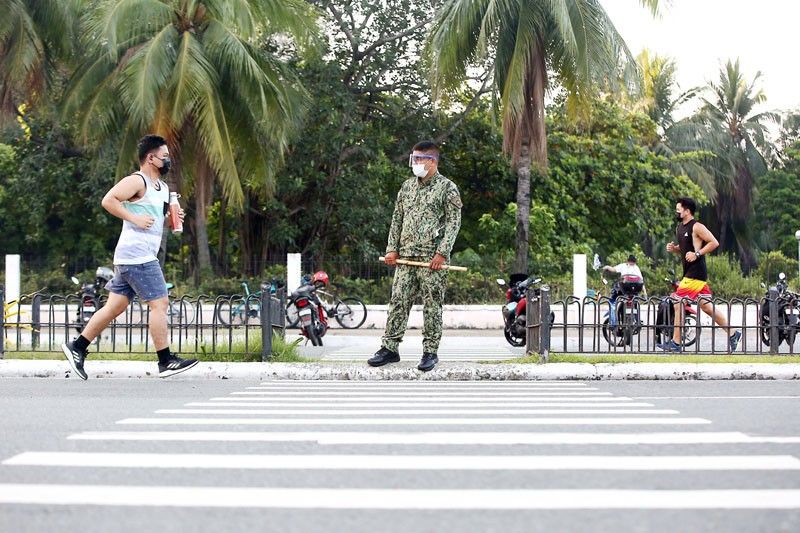Philippines logs record 7,999 new COVID-19 cases

MANILA, Philippines — It was another record-breaking day as new COVID-19 cases in the country yesterday totaled 7,999, the highest single-day surge since the outbreak of the pandemic last year.
Data from the Department of Health (DOH) yesterday also showed 114 new cases of South Africa, United Kingdom and P.3 variants. Data did not indicate, however, if the cases of the new variants were part of yesterday’s total.
The new cases brought to 656,056 the total number of reported COVID-19 infections in the country.
There were 80,642 active cases, representing 12.3 percent of the total. The positivity rate was pegged at 14.6 percent, which is way above the five percent recommendation of the World Health Organization.
Data also showed that 30 patients succumbed to the virus, raising the number of deaths to 12,930.
A total of 597 patients recovered, bringing the number of recoveries to 562,484.
Based on data, 50 percent of the 1,900 beds assigned to COVID-19 cases are now occupied.
Of the 13,500 isolation beds, 40 percent are utilized while only 37 percent of the 6,000 ward beds are occupied. On the other hand, 32 percent of the 2,000 mechanical ventilators are in use.
Of the 114 cases of new variants reported yesterday, 62 cases were South African, 46 were UK variant and six P.3 variant.
“These additional cases were among the 150 samples composed mostly of samples from NCR (National Capital Region) laboratories. Information of cases with these variants are being investigated and verified,” the DOH noted.
The new variant cases form part of the 11th batch of swab specimens subjected to the whole genome sequencing (WGS) conducted by the DOH, University of the Philippines-Philippine Genome Center and the University of the Philippines-National Institutes of Health.
According to DOH, four of the six new cases of P.3 variant are local cases from the NCR, while two cases are being verified if they are local cases or from returning overseas Filipinos (ROF).
Data show all of the six cases of P.3 variant – first detected in the Philippines – are “active.”
“At present, the P.3 variant is still not identified as a variant of concern as current available data are insufficient to conclude whether the variant will have significant public health implications,” the DOH added.
Of the 62 cases of South African or B.1.351 variant, 43 are local cases while 19 are being verified on their nature, whether they are local or ROF cases.
This brought the total number of the South African variant cases in the country to 152.
Of the 43 local cases, 41 are from NCR while two are from CALABARZON. Sixty cases are still active and two have recovered.
On the other hand, the DOH said that of the 46 additional cases of UK or B.1.1.7 variant, 36 are local cases from NCR, two are ROFs and eight cases are currently being verified.
The two ROFs detected have the following regions as their indicated addresses – Cagayan Valley and Bangsamoro Autonomous Region in Muslim Mindanao (BARMM). The latest figure brought to 223 the number of cases of UK variant in the country. Forty five of the cases are active and only one has recovered.
Renewed warning
With the coming Holy Week, the DOH is asking everyone to “avoid large congregations and practice religious activities at home.”
The DOH also urged the public to “stay at home unless extremely necessary” to go out.
“Remember to avoid the three C’s – Closed spaces, Crowded places and Close contact settings,” it added.
“Strict adherence to the minimum public health standards in all private and public settings is strongly emphasized to minimize COVID-19 transmission and avoid further mutations,” the DOH added.
Health Undersecretary Leopoldo Vega, who supervises the DOH’s One Hospital Command, has expressed concern that more than 50 percent of the surge is happening in the NCR, particularly Manila and Quezon City, and Cavite province.
“Now, our situation, we know that there is a rise in the number of positive cases of COVID-19. It is saddening that 53 percent of the active cases are from NCR – Manila, Quezon City and Cavite,” Vega said in Filipino at a press briefing Friday with presidential spokesman Harry Roque Jr. and other officials.
“Along with the increase of the new cases, there is also an increase in the usage of isolation beds and the COVID wards here in Metro Manila,” he added.
“Even the utilization rate of ICU has increased. Our ICU has occupancy rate of 64 percent right now. We have a total of 672 ICU beds in Metro Manila,” he said.
While some quarters believe the Philippines is back to square one in terms of handling the COVID-19 pandemic, Vega pointed out that the health care system is better equipped with technical know-how and the ability to treat the disease.
Vega said the DOH has intensified coordination among all hospitals through the ONE Hospital Command, which can provide direction and assistance to people who might need emergency medical attention.
Public Works Secretary Mark Villar, who is also “Isolation Czar,” reported that the DPWH was able to construct 602 facilities for COVID-19 with bed capacity of 22,352. More quarantine facilities are being eyed, he added.
The DPWH is also opening a “pop-up” hospital at the Quezon Institute in Quezon City to raise the bed capacity for severe cases of COVID-19 by 110 beds.
Last Friday, the IATF ordered the temporary suspension of operations of driving schools, traditional cinemas and video- and interactive-game arcades, libraries, archives, museums and cultural centers in GCQ areas.
Meetings, incentives, conferences and exhibition events shall be limited to 30 percent venue capacity.
President Duterte also ordered government agencies to operate at a reduced capacity of 30 to 50 percent of the work force from March 22 to April 4 in Metro Manila and other areas under GCQ.
Apart from Metro Manila, the province of Apayao, Baguio City, Kalinga, Mountain Province, Batangas, Tacloban City, Iligan City, Davao City and Lanao del Sur are also under GCQ until March 31. – Cecille Suerte-Felipe, Christina Mendez
- Latest
- Trending





























